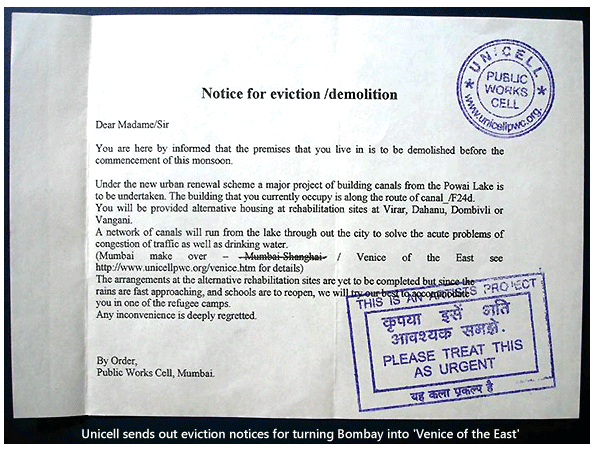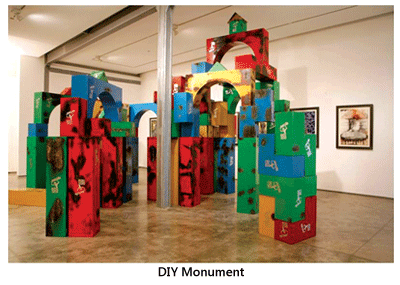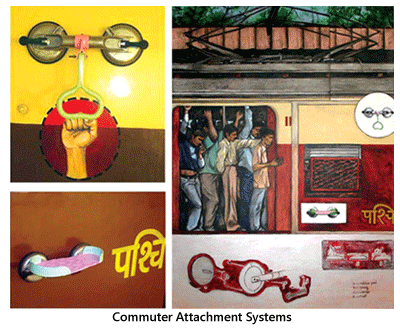- Prelude
- Editorial
- A Conversation with Sheela Gowda
- The DIY Artist with a Mission
- Discovering Novel Horizons
- A Conversation with Raqs Media Collective
- Manjunath Kamath
- Jitish Kallat- the Alchemist
- The Artist and the Dangers of the Everyday: Medium, Perception and Meaning in Shilpa Gupta's work
- An Attitude for the Indian New Media
- Weave a Dream-Theme Over Air or a Medium like Ether
- Installation in Perspective: Two Outdoor Projects
- Towards The Future: New Media Practice at Kala Bhavana
- Workshop @ Facebook
- Desire Machine: Creating Their Own Moments…
- Typography: The Art of Playing with Words
- Legend of a Maverick
- Dunhill-Namiki
- The Period of Transition: William and Mary Style
- The Beauty of Stone
- Nero's Guests: Voicing Protest Against Peasant's Suicides
- Patrons and Artists
- The Dragon Masters
- What Happened and What's Forthcoming
- Art Chennai
- Art Events Kolkata
- Winds of Change
- Art Bengaluru
- Mumbai Art Sighting
- Musings from Chennai
- In the News
- Previews
- Ascending Energy, Merging Forms: Works by Satish Gujral
- Re-visiting the Root
- The Presence of Past a New Media Workshop
- Taue Project
ART news & views
The DIY Artist with a Mission
Volume: 3 Issue No: 15 Month: 4 Year: 2011
A conversation between Vishal Tondon and Tushar Joag

Tushar Joag is a man with a mission. Flora, the spirit of Mumbai, has gone missing and he will help find her. He dismantles and rebuilds the Flora Fountain several times as he travels with her across Mumbai looking for her lost spirit. The frenzied character of the city is reflected in this work. Tushar has consistently dealt with issues relating to the city. He makes art as public intervention and invents mock corporate identities like Unicell with its PWC (Public Work Cells), a corporate body of one. Unicell as an act of satire creates objects like the Lamp Post Woman, the Street Sign Man, the Post Box Man and the Couch Man; vendor stalls that metamorphose into harmless looking objects at the scent of prowling municipal officials. Or the Commuter Attachment Systems which will help boarders hang on to every available surface, including the exterior, of the overcrowded local trains. These devices that are impractical solutions to the urban situation lampoon the absurdities of the bureaucracy that despoiled the urban fabric.
The defacing of public monuments by regimes and their subjects is also a cause for grave concern. So, Reconciliation and Truth, an exposition by the Unicell Department of Monuments and Edifices of which Tushar is the self-appointed bureau chief came up with the suggestion that all future monuments be created as debris, so as to avoid the public being tempted to desecrate them in the first place! Also, a prototype for a do-it-yourself (DIY) monument was created as a sneer at the tradition of vandalizing historical monuments to create new ones.
Tushar believes art is responsible for maintaining cultural continuity as well as providing ruptures that bring a fresh outlook through its questioning of the present.
We had the opportunity to interview Tushar as he came down to Kala Bhavan, Santiniketan, as a resource person for the workshop The Presence of Past, during the days 1st-8th March. Here are excerpts from the interview.

Vishal Tondon: We are glad to have you here for this workshop. We are keen to know what activity your group is coming up with, and how have you briefed your students?
Tushar Joag: We decided to look at different modes of transport in Santiniketan. As for a briefing, I am here only to facilitate the whole process and keep it on track. I let the students come up with the ideas. We decided to do one collaborative project. Somebody spoke about the Ambassador, and it was absolutely a blast from the past. In all, we have taken five modes of public transport of which we would create a hybrid. In India, the past and the present occur simultaneously and we have hybrids. I encourage the students to go talk to the people who ply these vehicles. We will make stop animation films using these vehicles and the interviews the students collect. My brief to them has been to creatively put together the data, just as an artist should. They are weaving a story. So these vehicles in the film will be seen to travel down parallel histories, and then come to an intersection where they collide with a bang and we get a new hybrid vehicle, the POP-005 (Presence of Past-005). This vehicle will be functional and driven around the campus and the streets. By the way, the headlight of the vehicle will double up as the projector from which the film will be played.
VT: How has the interaction with the students been so far?

TJ: As a student, I never got to interact with artists. So I am always very happy to be invited to interact with students. I like to share my experience with them. But I have something to say to the younger generation. I feel they do not totally get involved with things. When they are told to go and interact with people and get data, they will just ask one or two questions and come back. Which is not only here, it is so also at other places. I don't see the passion. I don't understand why that is. They would rather hit the internet than do field work. I feel one should work harder.
VT: You were saying, “It is not enough to politicize aesthetics but it is necessary to also aestheticise politics.” Could you please elaborate on that?
TJ: Let me give you an example of what aestheticising politics would be. Medha Patkar and other protestors of Narmada Bachao Andolan were supposed to go to Mantralaya. So our group planned an action outside Mantralaya. We had a list of as many oustees as we could get and we had printed these names one each on separate A4 size papers. We had enrolled students from the JJ School of Arts and we made three teams. We all rushed to the junction facing Mantralaya. One group would draw with chalk something like a plot of land, the other would apply glue, and the last group would paste the names of the oustees here. We were symbolically allotting land to the protestors…we did this through our group called 'Open Circle'. The protest lasted barely for five minutes because the cops came and arrested us.
VT: Which other activities have you done in the public sphere?
TJ: Looking for Flora talked about the supposed migrants having to leave the city. Unicell made a replica of the Flora Fountain, with the figure of Flora missing from it. The fountain travels from one spot to another within Mumbai, looking for Flora who is like the spirit of Mumbai. As we would install it, pavement dwellers and migrants would crowd around us, thinking we are shooting a film. We would have brief interactions with them about what I am doing and why I am doing it. In the Venice of the East project, Unicell came up with these mock eviction notices to people whose settlements would come in the way of the hypothetical project of turning Mumbai into the Venice of East. Here, Unicell was mocking the attitude of bureaucrats wanting to turn Mumbai into Shanghai at the cost of discomfort to many a hapless citizen.
VT: Would you please tell us more about Unicell?

TJ: The task of Unicell is 'organizing one's self' in the 'Do It Yourself' style, and to insert aesthetics into the social and political arena. Though this happens entirely in the cultural plane, most of the actions/objects are placed in the public domain.
VT: The devices that Unicell created should be shared with a wider public, I guess. Not everyone visits art galleries…
TJ: I very much wanted to put these gadgets on the railway platforms. Earlier, there were these vitrines on railway stations, in which local shops used to advertise their stuff. My idea was to put the gadgets into those vitrines, so curiosity could be raised and a dialogue could be started. But then they changed the whole game. The vitrines have been replaced by media advertising. And you can't just buy one screen or hoarding. You have to buy the whole media. So they have conveniently edged out small players. Then I thought of making comic books with my Superheroes, but I haven't made any progress on that front yet.
VT: There is an element of the absurd in some of your work, which is exciting. You have said somewhere that a lot of your work is like an answer to the absurdities of government bureaucracy.
TJ: That is right.
VT: When you took a short break from making art in the beginning of your career, you said you were going through the predicament what use art is to society. So what conclusion did you come to that you started making art once again?
TJ: I realized that if I'd like things to change, the least I could do is start doing that in my own way, through my calling. I somehow started believing that even an individual could make a dent. That is why 'Unicell'; even if you are one single entity, you can try to make a difference. Like the city as an organism, with me being one cell in it and me trying to be a malignant cell, you know. (Laughs). So, one can try and make a difference. It is pointless being just angry about things.
VT: You were also doing activism…
TJ: I used to just go and sit in all kinds of meetings and join protests…attend morchas and make posters. But that was not fulfilling enough. Let me explain. I'd say Medha Patkar is my hero absolutely; the way she is into the whole thing. I have to admit I can't do something like that. So whatever little activism I did ended up being tokenism. I wouldn't step into it unless I can be totally dedicated to the cause and go the whole way. So I thought maybe I have to do something through art.
VT: Your video Three Bullets for Gandhi also raised some pertinent questions.
TJ: Yes. The three bullets Nathuram Godse shot at Gandhi thrice imply the killing of Gandhi thrice; once by Godse, once by the State, and once by us. The way Gandhi's ideals are thrown to the wind. Even how we use Gandhi as an icon is not right. In the video, I have put myself as the three lions that spit out the bullets and fire to symbolize the State.
VT: A lot of public intervention projects finally end up in the gallery space…
TJ: Not at all. Many of my works have existed only in the public domain. I've had just two solo shows. One was with the train compartments, showing the Commuter Attachment Systems. The other show was Reconciliation and Truth, which showed the DIY Monument among other works. Looking for Flora was completely in the public domain. Unicell displayed just some photographs of the project in the gallery later. Of course, I need to put stuff in the gallery too. Or else how will I support myself? We don't have an arts council in India or a kind of social security system so that an artist can do just what he wants all the time. And anyway, why shouldn't I put work in a gallery? It is not that I supply galleries with editions of works. I do drawings and canvases with my own hand. I enjoy drawing. I love drawing. So I need that kind of an output also.

VT: Sure. I'd like to ask you about the trip you made last year to Shanghai on motorcycle. Could you please tell us about Riding Rocinante?
TJ: I travelled from Mumbai to Shanghai via Sardar Sarovar and Three Gorges Dam. It took 53 days and I covered a distance of 9,624 Km. This was a performative action for a show which was about interaction between the two cultures India and China. So I made what was like a reverse journey to the ones made by Hiuen Tsang and Fa-Hien. I am also obliquely referring to Che Guevara and Prince Siddhartha, both of whom took up life-changing journeys before coming up with revolutionary ideas. So I was hoping my life would change in some way. Obviously it hasn't. (Laughs)
VT: It hasn't?
TJ: Well, I didn't get a halo or anything. (Laughs). I didn't become the Buddha. Actually, I was looking forward to direct interaction with people across cultures. Instead of making the work in my studio and shipping it off to Shanghai, I thought of a format where in the process I would actually get to experience how the food, landscape and culture changes as you travel to your destination. I encountered the submerged villages of Narmada valley, the Himalayas, the landscapes of Tibet, the receding waters of Yamdrok Tso, tourists at the Three Gorges Dam, and finally I reached Shanghai.
VT: There was another very interesting work called Blind Spot, with the oil trays…
TJ: Ummm…I wasn't very happy with the way that work turned out. I wanted it to look like a big oil slick, but I could not execute it properly because of logistical reasons. I was comparing the war over oil with the story of Mahabharata. There is this incident in the Mahabharata where Duryodhana visits the Pandavas, who are in exile. They live in this mysterious and delightful palace which has a lot of weird spaces. Duryodhana mistakes the surface of a pond for marble and steps into it. Draupadi laughs at him and mocks him, “The blind son of a blind father”. The work Blind Spot had a very tangential reference to Bush senior and Bush junior. And the war was about oil; it was about the whole maya of oil. That is why the black oil in the trays.
VT: Thanks for sharing with us so much about your work. As a parting note, would you like to give some advice to young artists like me?
TJ: Yes. Like I was telling you about the short break I took from work in the beginning of my career. It was a period of intense introspection. You should constantly have a relook at what you are doing. You have to question what you are doing and see where it is leading you.
Image Courtesy: The Artist